|
Thursday, Feb. 5
11:30 a.m.
Special Particle Astrophysics Seminar - Curia II (NOTE DATE and TIME)
Speaker: Federica Bianco, Harvard and Smithsonian Center
for Astrophysics
Title: Chasing Shadows: Occultation Surveys of the
Outer Solar System
2:30 p.m.
Theoretical Physics Seminar - Curia II
Speaker: Christian Sturm, Brookhaven National Laboratory
Title: Heavy Quark Current Correlators for Precise Quark Masses and Strong Coupling Constant
3:30 p.m.
DIRECTOR'S COFFEE BREAK - 2nd Flr X-Over
4 p.m.
Accelerator Physics and Technology Seminar - One West
Speaker: Hans Weise, DESY
Title: The European XFEL
Friday, Feb. 6
3:30 p.m.
DIRECTOR'S COFFEE BREAK - 2nd Flr X-Over
4:00 p.m.
Joint Experimental-Theoretical Physics Seminar - One West
Speaker: George W.S. Hou, National Taiwan University, Taipei
Title: CP Violation for the Heaven and the Earth
Sunday, Feb. 8
2:30 p.m.
Gallery Chamber Series - 2nd Flr Art Gallery
Artist: Waller/Maxwell Guitar Duo
Tickets: $15
Click here for NALCAL,
a weekly calendar with links to additional information. |
|
Thursday, Feb. 5
- Santa Fe black bean
- Steak tacos
- Chicken Wellington
- Chimichangas
- Baked ham & Swiss on a ciabatta roll
- Assorted sliced pizza
- Crispy fried chicken ranch salad
Wilson Hall Cafe menu |
|
Thursday, Feb. 5
Dinner
- Closed
Wednesday, Feb. 4
Lunch
- Raspberry chicken
- Spaghetti squash w/ green onions
- Steamed green beans
- Mocha cake
Chez Leon menu
Call x3524 to make your reservation. |
|
|
President Obama to address DOE employees at 11 a.m.
President Obama plans to address all Department of Energy employees and contractors at 11 a.m. CST today. Fermilab will have an audio broadcast of the address available in Ramsey Auditorium at that time. All employees are encouraged to attend.
|
From broadcast to books, Atkinson serves public
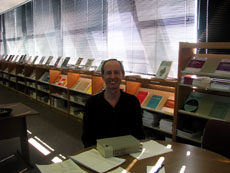
Rob Atkinson
Rob Atkinson's voice used to boom out of stereo speakers when he
anchored a morning news broadcast.
While he now delivers information in a much quieter tone to a select
audience of physicists and science lovers, Atkinson views his job as one
of Fermilab's librarians, as just as important a public service.
He provides a window into the world of high-energy physics and the
laboratory's history for science enthusiasts and nearby residents who depend
on him to simplify the complex field. He also serves as a
resource for physicists looking for anything from a decade-old report
to the most up-to-date research paper. Fermilab allows Atkinson
freedom to work in different branches of librarianship.
Most recently, Atkinson is helping to create INSPIRE, a collaborative project between Fermilab, SLAC, CERN and DESY. The system builds upon SPIRES, a heavily used high-energy physics electronic database of physicists' papers. According to a 2007 survey of 2,000 physicists by INSPIRE collaborators, 48.2 percent said SPIRES was their top
source of information, compared to 8.5 percent for Google.
INSPIRE, set to launch in about six months, takes that
information to a higher level of electronic sophistication. It relies
on Google-like features, such as news alerts on newly archived papers.
It also personalizes research. Users create an account, much like
Google groups, which stores their findings.
Atkinson says INSPIRE is one of the most exciting projects he has worked
on in his 17 years at the laboratory. During that time, he ushered the Library
through various transformations, including the electronic one that made papers available online.
Atkinson is also proud of the
Fermilab collection, a section of the Library dedicated to Fermilab's
history that includes the laboratory's first design report and old
newsletters. Previously, Fermilab-related publications had been
scattered throughout the collection, making them difficult to find.
Outside of the Library, Atkinson still dabbles in radio as a
long-standing member and vice president of Fermilab's Ham Radio Club.
--Kristine Crane
|
New employees
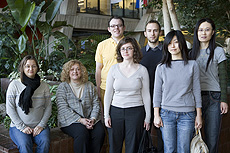
Sitting, left to right: Elena Gerchtein, CD, guest scientist; Elena Farago-Trofimuk, Finance; accounting assistant III. Front row:
Anna Chastain, BSS, administrative support assistant I; Maiko Takahashi, PPD, guest scientist (International Fellowship). Back row: Joshua Grossheider, BSS, administrative support assistant I; Mark Williams, PPD, guest scientist (International Fellowship); Min Jong Kim, TD, applications developer and systems analyst I.
|
Looking for dark matter in all the wrong places
From Cosmic Variance, Feb. 4, 2009
David Harris at symmetrybreaking points to a paper and accompanying commentary on the search for high-energy cosmic antiprotons by the PAMELA satellite experiment. (What one defines as "high-energy" depends on one's upbringing; we're talking about energies of up to 100 times the mass of the proton.) The impression is given that this is a brand-new result casting doubt on the earlier claims that PAMELA might have detected evidence for dark matter; that's not really a correct impression, so it's worth getting it all straight.
The PAMELA satellite, an Italian/Russian/German/Swedish collaboration, looks at high-energy cosmic rays from orbit, and pays particular attention to the presence of antimatter - basically, positrons (anti-electrons) and anti-protons. Part of the idea is that a high-energy matter particle can simply be a particle that had been lying around for a while and was accelerated to large velocities by magnetic fields or other astrophysical processes, whereas you need some pretty high energies to produce antiparticles in the first place. Say, for example, from the annihilation of dark matter particles with each other. There are certainly some high-energy collisions in the ordinary non-dark-matter world, so you expect to see a certain fraction of antimatter, but that fraction should noticeably diminish as you get to higher and higher energies.
Read more
|
|
|
Studying the heavy,
looking for the new
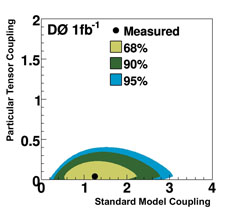
The Standard Model predicts that coupling should be one and the tensor coupling should be zero. The measurement agrees well with this prediction. The colored regions indicate the measurement's uncertainty, with a 95 percent certainty that the answer is within the colored regions (tan, green, blue).
The Standard Model is an amazing scientific theory. It successfully predicts the results of all measurements, with no confirmed discrepancies. But physicists know that the model is incomplete. There are quantities that are not predicted and there are places where a sufficiently precise measurement might reveal an undiscovered flaw. DZero physicists have just announced the results of a search for chinks in the Standard Model's armor.
Because low-energy phenomena are quite common, they have been thoroughly studied, and the chance of finding something totally new is relatively unlikely. However, since high-energy phenomena are uncommon, this terrain is, by comparison, unexplored. And there is no particle with higher energy than the top quark, with a mass nearly double the next-lighter particle.
Scientists believe that the top quark decays 100 percent of the time into a bottom quark and a W boson. The Standard Model predicts that this decay occurs 100 percent of the time with a particular "handedness." In the subatomic world, handedness relates to the spin of a particle. Particle decays can have a "left-handed" or "right-handed" nature; where left and right can be thought of as clockwise and counterclockwise. Decays governed by the weak force, which includes the top-quark decay, are always only of the left-handed variety.
DZero physicists recently combined all relevant measurements of the production of the top quark and the subsequent decay of its daughter, the W boson. As they studied the data, they considered the possibility that the theory was incorrect and that the universe might allow for additional kinds of decays governed by the weak force: right-handed and two tensor decays. Using advanced analysis techniques, DZero physicists were able to determine that the Standard Model describes the data well, with the expected left-handed decays most likely and the other three possibilities not favored. Measurements at the research frontier tend to favor a particular model, rather than make an unequivocal statement, so it remains possible (but improbable) that these unexpected decays could yet be observed. With more data, the analyzers expect to further refine their result and resume the search for the Standard Model's chinks.
-- Don Lincoln
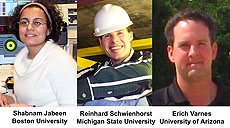
These physicists played a leading role in this analysis.
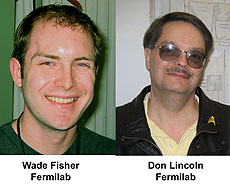
Don Lincoln has taken over from Wade Fisher as DZero Result of the Week author.
|
|